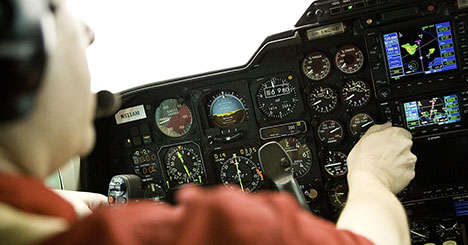
Aug. 17, 2017
NBAA members should be aware that the Federal Communications Commission (FCC) Enforcement Bureau is working with the FAA to investigate the misuse of – and harmful interference to – the “Mayday” frequency of 121.5 MHz, said Sarah Wolf, NBAA senior manager of security and facilitation.
“As all pilots know, this frequency is dedicated to aviation emergencies and distress,” she said.
The FAA constantly monitors 121.5 MHz for actual distress calls and emergencies, and an FAA report of nonemergency use of the frequency, which impedes its ability to monitor it, led to the first FCC Enforcement Advisory of the year on Aug. 8. The advisory made clear that the “FCC Enforcement Bureau will aggressively enforce the rules related to aviation radio operations” to ensure the integrity of safety and distress frequencies that are vital to safeguarding lives and property.
The advisory reiterated that on this frequency, FCC rules prohibit false distress and emergency messages and all superfluous communications. This includes obscene, profane or indecent messages; general calls not addressed to a specific station; routine messages; radio tests; and recorded audio such as music.
If the FCC Enforcement Bureau finds an individual in violation, the fines top out at $19,246 for a single violation and up to $144,344 for an ongoing violation. The FCC can also seize the offending radio equipment and impose criminal sanctions. To avoid these consequences, and preserve the safety provided by 121.5 MHz, Wolf said pilots should preserve the sanctity of the Mayday frequency because the FAA investigates each distress call immediately.
Pilots who need to communicate air-to-air should select 122.750 MHz, which is dedicated to this purpose.


 International Business Aviation Council Ltd.
International Business Aviation Council Ltd.